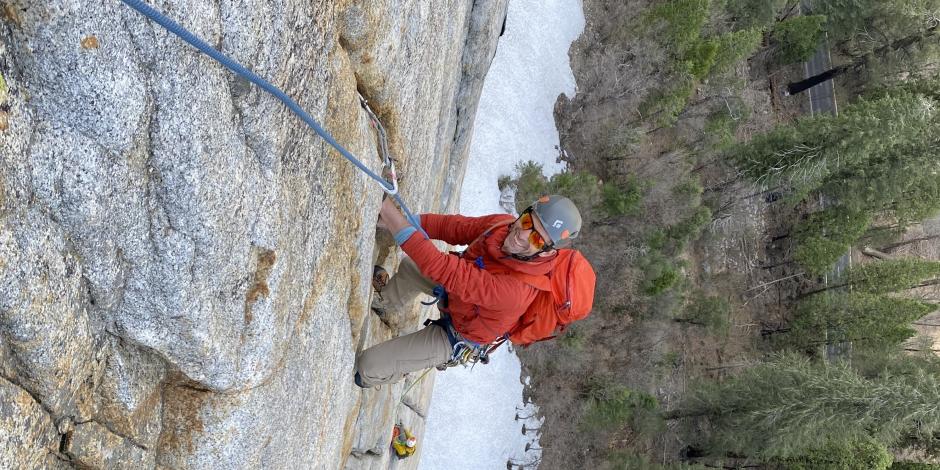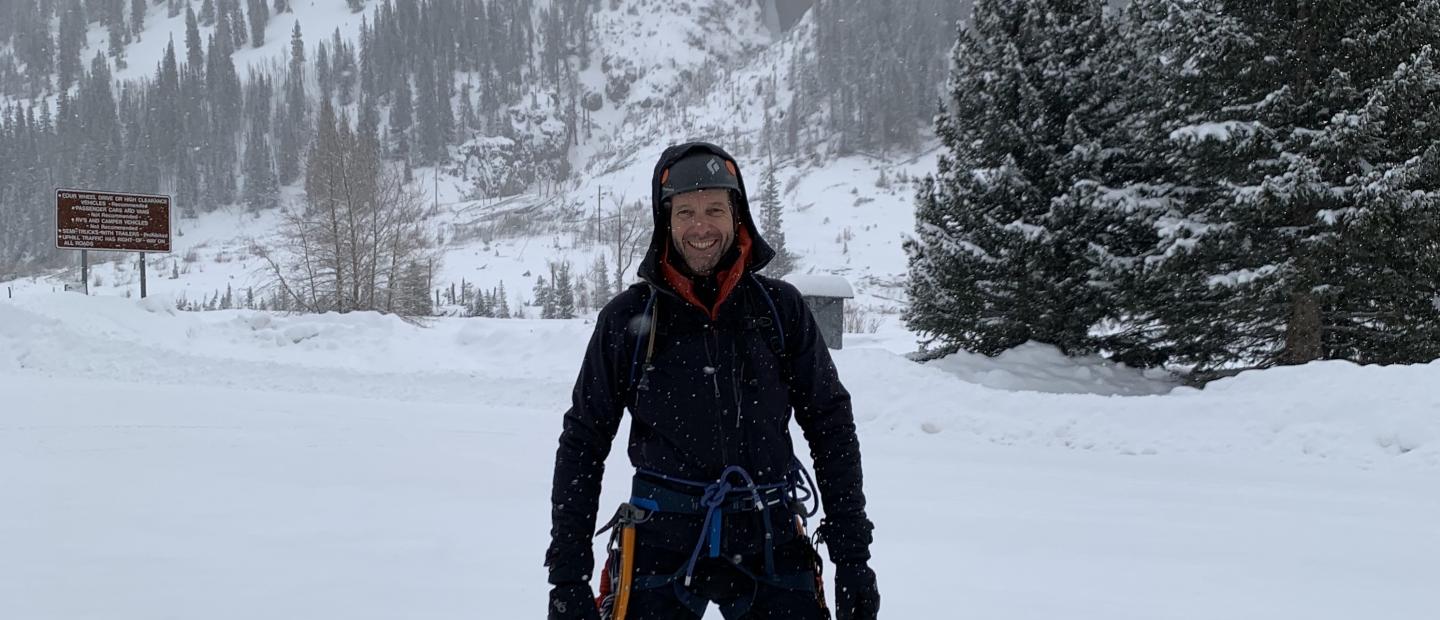Kids in the Wild: 50 Years of Risk Management at NatureBridge

"II used to ice climb quite a bit and often without a rope. In 1998, I took a 100 foot fall when I was pulling up over the top of a frozen waterfall. Broke my tibia plateau and my other foot, and I was in a wheelchair for months. I also shattered my femur and broke my shoulder a year ago in a really bad paragliding accident in Mexico. So...yeah, I’ve banged up a few things.”
Listening to these injuries listed off one after another, it’s easy to believe you’re hearing from an X-Games athlete or a professional adrenaline junkie; a thrill-seeker and risk-taker of the highest order.
Who you’re actually hearing from is Jeff Crow, NatureBridge’s Director of Risk Management.

“And it’s not thrill-seeking. It’s doing these activities that I love and enjoy. If I’m being ‘thrilled,’ I’m doing something wrong,” he says. “Every climber I know who’s had a thrilling moment didn’t invite that into their world; they’re having it because they’re in over their heads."
It’s this even-keeled mentality mixed with a passion for (sometimes extreme) outdoor adventure that makes Jeff ideal — and perhaps atypical — for his field. At NatureBridge, he oversees field policy and institutional risk management; the former relates to standards and practices that inform programs, educators, staff, etc., and the latter refers to the contracts and insurance that protect the organization.
“They initially hired me just for the field policies, then I immediately realized that I should be in charge of institutional risk management as well because I’d had the experience of being on the ground [as an educator] and I knew the actual risks we faced out there.”
Jeff had been in outdoor education for 25 years, working as an educator and administrator in various organizations before becoming NatureBridge’s Director of Risk Management in 2010. His initial position was only part-time; difficult to imagine in today’s risk-conscious society.
“I couldn’t even believe I was saying this,” he laughs, “but I said to my boss, ‘Hey, I need to take over contracts and insurance.’”
Though risk management has changed dramatically since 2010, the contrast is even sharper when looking back at NatureBridge’s history. In 1971, the year NatureBridge was founded, the phrase was only 15 years old and used mainly in financial sector settings.
“It was a less conservative time back then,” says Jeff. “I can’t speak to NatureBridge specifically, but I grew up in the ‘70s and started working in outdoor ed in the ‘80s, and I can say...there was no conception of risk management in outdoor education; people didn’t think you needed it.”
While “policies and procedures” may sound dry and intangible, there are numerous real world examples of risk management having an impact on people’s lives — and even saving them.Jeff Crow, NatureBridge's Director of Risk Management
Over time, NatureBridge developed more standardized policies and procedures to protect and support our students, educators and staff. While “policies and procedures” may sound dry and intangible, there are numerous real world examples of risk management having an impact on people’s lives — and even saving them.
One such example is the Woolsey Fire that decimated NatureBridge’s Southern California campus in November 2018. The fire burned nearly 100,000 acres in the Santa Monica Mountains, destroying 1,643 structures and claiming the lives of three people. It could have been significantly worse for NatureBridge’s staff and participating students had risk management not played a role.
“One of our policies was not to operate in the fall because that was our heaviest fire season, and that’s when it burned down,” says Jeff. “That policy was by design. We absolutely would’ve had people there if we had forced programs to happen that time of year.”
Another tangible result of intelligent risk management at work came in a 2008 rockfall at Curry Village in Yosemite National Park. A granite slab broke off and hundreds of tons of rock and debris came sliding down into the well-populated camping area; more than 1,800 cubic yards or the equivalent of 570 dump truck loads in total.
“Our kids and chaperones had always done rockfall drills because of the potential in Yosemite, and so when this happened, everyone knew immediately what to do,” says Jeff. “Our policy of doing rockfall drills translated into what they considered — whether it literally did or not — something that saved their lives.”
The work of risk management is never complete, as unique challenges arise every year. Take 2020, for instance: the COVID-19 pandemic presented completely new risks with ever-changing guidelines and goal posts from all levels of government.
“We have a risk management manual that covers all of our normal field policies, and that manual is the same size as our health and safety plans, which literally just covers our COVID policies.”
Jeff and his team continue to take their guidance mainly from the Centers for Disease Control and Prevention (CDC), as well as the World Health Organization and Johns Hopkins University's coronavirus resource center, then align it with the California Department of Public Health and the individual health departments from each county where NatureBridge programs take place. National Park Service and US Public Health recommendations also factor into the guidance. In the end, all of that research, policymaking and a dense health and safety plan has allowed NatureBridge to once again host in-person programs while mitigating the COVID-19 risk to staff and participants.
Whether the threat is wildfires, rockfalls or COVID-19, risk can still often feel distant, and the role of risk management can sound gloomy or bureaucratic. Jeff sees his role very differently. He makes sure to reach out to every NatureBridge educator to touch base, assuring them that his job isn’t as somber or rigid as they might imagine.
It’s not preventing you from doing things; my job as Director of Risk Management is to allow you to do things. It’s to get you comfortable doing things you weren't comfortable with before, and to open up experiences to your students that you’ve never done because you thought it was too risky or you didn’t see a path.”Jeff Crow
“It’s not preventing you from doing things; my job as Director of Risk Management is to allow you to do things. It’s to get you comfortable doing things you weren't comfortable with before, and to open up experiences to your students that you’ve never done because you thought it was too risky or you didn’t see a path,” he says.
In other words, it’s not about avoiding new and exciting situations in the natural world; it’s about having the tools and policies in place to make sure no one gets in over their head as they explore.
“My job, fundamentally — and I look at this very seriously — is to get kids into wild places and to get them to have wild experiences.”
Spoken like someone with lived experience.

